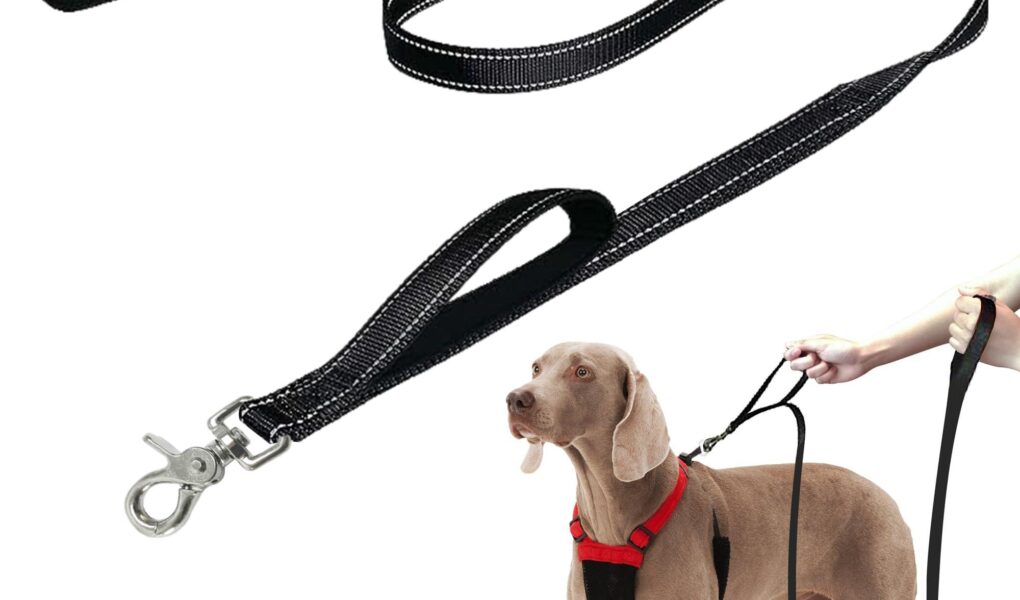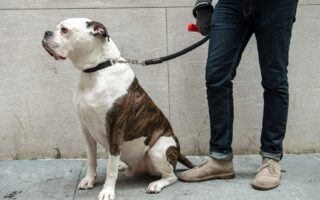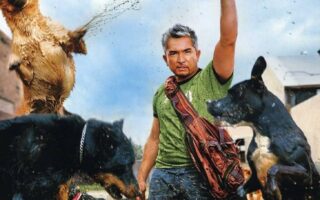Welcoming a new puppy into your home is an exciting and joyful experience, but it also comes with a unique set of challenges. One of the most important skills to teach your furry friend early on is leash training. This foundational practice not only fosters good behavior but also strengthens the bond between you and your pup as you explore the world together. Imagine the joy of leisurely strolls through the park, the thrill of discovering new sights and sounds, all without the stress of your puppy tugging and pulling at the leash. In this article, we’ll guide you through the essential steps and techniques for successful leash training, ensuring that your puppy grows into a well-mannered companion who enjoys every adventure by your side. So, grab that leash and let’s dive into the art of training your puppy to walk with confidence and calmness!
Table of Contents
- Understanding the Importance of Leash Training for Your Puppy
- Choosing the Right Leash and Collar for Optimal Comfort and Control
- Effective Techniques for Teaching Your Puppy to Walk on a Leash
- Troubleshooting Common Challenges During Leash Training Sessions
- Q&A
- To Conclude
Understanding the Importance of Leash Training for Your Puppy
Leash training is a fundamental aspect of pet ownership that fosters a healthy relationship between you and your puppy. By teaching your furry friend how to walk politely on a leash, you not only ensure their safety but also enhance their sense of security in various environments. A well-leash trained puppy is less likely to pull, dart, or become distracted, making walks enjoyable for both of you. This training can also prevent accidental injuries to your puppy or others, as they learn to respond to your cues and maintain a safe distance from potential hazards.
Moreover, leash training paves the way for socialization opportunities with other dogs and people. Proper leash manners allow your puppy to confidently experience the outside world without overwhelming them or causing disruptions. Consider the following benefits of leash training:
- Improved Control: Helps you manage your puppy’s energy and allows for a more structured walk.
- Enhanced Bonding: Promotes trust and cooperation between you and your puppy.
- Positive Experiences: Encourages enjoyable outings that foster good behavior.
| Training Tips | Benefits |
|---|---|
| Start early | Sets a foundation for good habits |
| Use positive reinforcement | Encourages learning through rewards |
| Practice regularly | Builds consistency and reliability |
Choosing the Right Leash and Collar for Optimal Comfort and Control
When embarking on the journey of leash training your puppy, selecting the appropriate leash and collar is crucial for both comfort and control. Begin with the snugness of the collar; it should fit securely but still allow for a couple of fingers to slide underneath. Materials can vary significantly, so consider the following options:
- Nylon collars: Affordable and easy to clean.
- Leather collars: Durable and can mold to your puppy’s shape over time.
- Martingale collars: Offer more control without choking, ideal for training.
For the leash, opt for a length that matches your training style and environment. Standard leashes typically range from 4 to 6 feet, providing you with enough control while allowing your puppy some freedom to explore. Alternatively, you might opt for a training lead that offers added versatility. To help you decide, refer to the table below illustrating leash types and their optimal uses:
| Leash Type | Best For |
|---|---|
| Standard Leash | Everyday walks, basic training |
| Retractable Leash | Allowing freedom in open spaces |
| Training Lead | Teaching commands, distance work |
Ultimately, the right combination of collar and leash will not only enhance your pup’s training experience but also ensure that walks are enjoyable for both of you. Pay close attention to your puppy’s comfort and be prepared to make adjustments as needed, fostering a happy training environment.
Effective Techniques for Teaching Your Puppy to Walk on a Leash
Teaching your puppy to walk on a leash can be a rewarding yet challenging experience. Start by introducing your puppy to the collar and leash in a comfortable environment. Allow them to sniff and explore the leash while it’s attached to their collar, ensuring they associate it with positive experiences. Make this a fun game by rewarding them with treats and praise every time they walk alongside you or show calm behavior. Frequent short sessions are more effective than longer, stressful ones, making the process enjoyable for both you and your puppy.
Once your puppy is comfortable with the collar and leash, it’s time to practice proper leash manners. Consider the following techniques to enhance your training:
- Stop and Go: If your puppy pulls ahead, stop walking. Wait until they return to your side before continuing.
- Change Directions: Randomly change directions while walking. This keeps your puppy engaged and attentive to your movements.
- Use Rewards: Incorporate treats and verbal praise to encourage your puppy when they walk calmly beside you.
Remember, patience is key. If you encounter moments of frustration, take a step back, and allow your puppy time to learn at their own pace.
Troubleshooting Common Challenges During Leash Training Sessions
Leash training a puppy can sometimes be a bumpy ride, filled with unexpected challenges that test both your patience and your pup’s eagerness to learn. If your furry friend seems distracted or overly energetic, consider the environment around you. Distractions such as other dogs, pedestrians, or even enticing smells can easily capture your pup’s attention. To combat this, try the following strategies:
- Choose a quiet training area free from distractions.
- Use high-value treats to keep their focus on you.
- Incorporate short training sessions to hold their interest.
Another common issue is pulling on the leash, which can turn walks into a tug-of-war. Consistency in training is key to overcoming this hurdle. Make sure to reward your pup when they walk beside you without pulling. It can also be beneficial to implement the following techniques:
| Technique | Description |
|---|---|
| Stop-and-Go | Whenever your puppy pulls, stop walking and wait for them to return to your side. |
| Change of Direction | Regularly change your direction when walking to keep your pup engaged and focused. |
| Short Leash | Keep the leash short to limit the space for pulling and encourage them to stay close. |
Q&A
Q&A on Leash Training a Puppy
Q: Why is leash training important for my puppy?
A: Leash training is crucial for both safety and bonding. It helps your puppy learn proper walking etiquette, prevents them from darting into danger, and fosters a deeper connection between you and your furry friend. A well-trained puppy on a leash can enjoy walks without pulling or dragging, making the experience enjoyable for both of you.
Q: When should I start leash training my puppy?
A: You can begin leash training your puppy as soon as they arrive home. Early training sets up a solid framework for good behavior. Ensure your puppy is comfortable wearing a collar or harness before introducing the leash. Start with short sessions, allowing them to explore their new accessory in a safe space.
Q: What equipment do I need for successful leash training?
A: The right equipment makes all the difference! Opt for a lightweight collar or a comfortable harness that fits your puppy snugly without causing discomfort. Choose a sturdy leash, around 4-6 feet in length, giving you enough control without restricting your puppy’s movement too much.
Q: How can I make leash training fun for my puppy?
A: Turn leash training into an adventure! Use positive reinforcement, such as treats and praise, whenever your puppy walks nicely beside you. Incorporate games like tug or short play sessions during breaks to keep their spirits high. Celebrate small victories to make these lessons enjoyable and engaging.
Q: What should I do if my puppy pulls on the leash?
A: If your puppy pulls, avoid tugging back as it can reinforce that behavior. Instead, stop walking when they pull and wait for them to return to a slack leash. When they do, reward them, and continue walking. Consistency is key—over time, they’ll learn that calm walking leads to more adventures.
Q: How long does it take to leash train my puppy effectively?
A: Patience and consistency are the watchwords here! Training can vary based on the puppy’s age, breed, and temperament. Generally, you’ll see significant progress within a few weeks if you practice regularly. However, every puppy is unique, so be prepared for some ups and downs along the way.
Q: What if my puppy is scared of the leash?
A: Many puppies can be wary of the leash at first. Take it slow—allow your puppy to sniff and investigate the leash while rewarding them for calm behavior. Gradually introduce the feeling of the leash clipped to their collar during playtime. Positive associations are the key to overcoming their fears.
Q: Are there any common mistakes to avoid while leash training?
A: Yes, here are a few pitfalls to sidestep:
- Yanking the leash can create fear or resistance.
- Using the leash solely for correction may discourage your puppy.
- Neglecting socialization can hinder their confidence during walks.
Focus on positive reinforcement and build a routine that your puppy looks forward to!
Q: How can I reinforce good leash-walking behavior outside of training sessions?
A: Incorporate leash manners into your daily routine. Take your puppy on regular short walks to give them opportunities to practice. Reinforce good behavior with treats and enthusiasm whenever they walk nicely. Frequent, short practice sessions in different environments will also help them generalize the behavior.
Q: Can I leash train an older puppy or rescue dog?
A: Absolutely! While younger puppies may learn faster, older puppies and even adult dogs can be trained successfully. The key is to adapt your approach to their size and temperament. Be patient and consistent, using the same techniques of rewards and positive reinforcement tailored to their experience level.
Remember, leash training is a journey for both you and your puppy. Embrace the process—every step counts toward creating lifelong habits and cherished memories together!
To Conclude
In the dance of companionship that unfolds between you and your puppy, leash training is the first step toward mastering a harmonious rhythm. With patience, persistence, and a sprinkle of creativity, this journey can transform a simple walk into a delightful adventure filled with exploration and bond-building. Remember, every tug on the leash is a chance to communicate, every pause is an opportunity to observe, and every success—no matter how small—is a milestone worth celebrating. Embrace the process, cherish the moments, and soon you’ll find that your puppy not only walks by your side but also captures your heart in their own playful, wagging way. Happy training!



